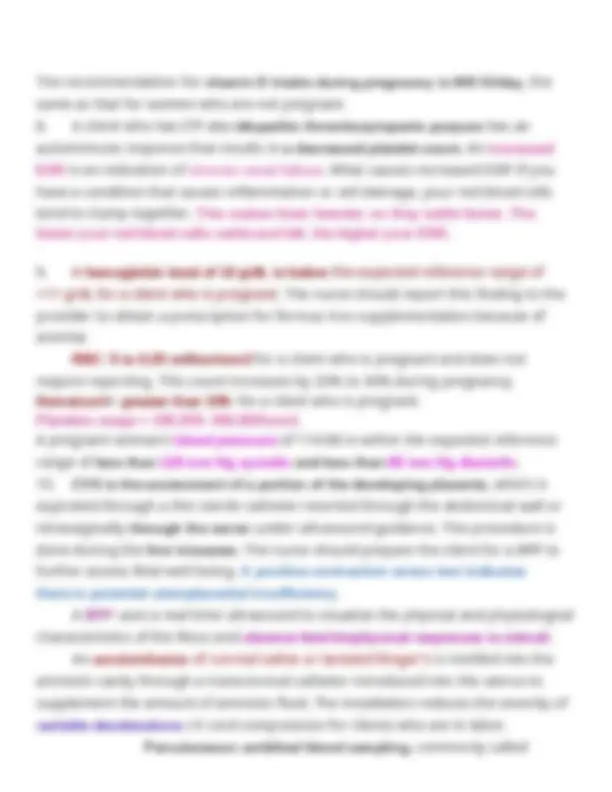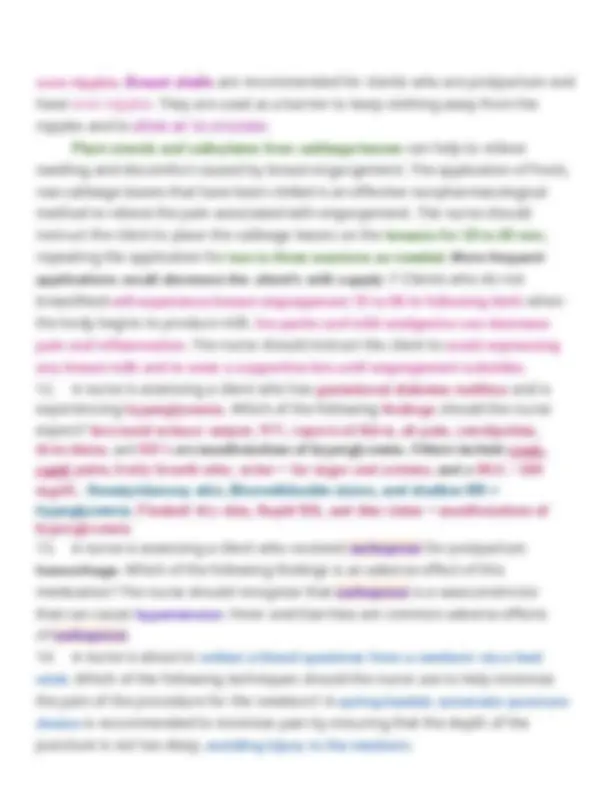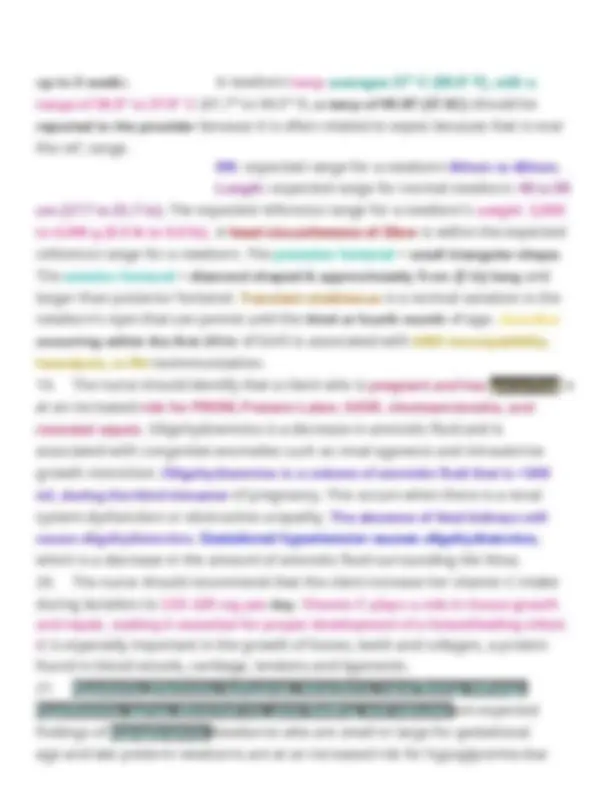









Study with the several resources on Docsity

Earn points by helping other students or get them with a premium plan


Prepare for your exams
Study with the several resources on Docsity

Earn points to download
Earn points by helping other students or get them with a premium plan
Community
Ask the community for help and clear up your study doubts
Discover the best universities in your country according to Docsity users
Free resources
Download our free guides on studying techniques, anxiety management strategies, and thesis advice from Docsity tutors
ATI Maternal Newborn Notes from ATI Quizzes for the Proctored Final
Typology: Lecture notes
1 / 13

This page cannot be seen from the preview
Don't miss anything!








cordocentesis , is the most common method used for fetal blood sampling and transfusion.
sore nipples. Breast shells are recommended for clients who are postpartum and have sore nipples. They are used as a barrier to keep clothing away from the nipples and to allow air to circulate. Plant sterols and salicylates from cabbage leaves can help to relieve swelling and discomfort caused by breast engorgement. The application of fresh, raw cabbage leaves that have been chilled is an effective nonpharmacological method to relieve the pain associated with engorgement. The nurse should instruct the client to place the cabbage leaves on the breasts for 15 to 20 min, repeating the application fo r two to three sessions as needed. More frequent applications could decrease the client's milk supply. F Clients who do not breastfeed will experience breast engorgement 72 to 96 hr following birth when the body begins to produce milk. Ice packs and mild analgesics can decrease pain and inflammation. The nurse should instruct the client to avoid expressing any breast milk and to wear a supportive bra until engorgement subsides.
rapid pulse, fruity breath odor, urine + for sugar and acetone, and a BGL >
22w gest. came in and the nurse instructed the pt to have an unrestricted diet with at least 150 g of carbohydrates before the test and to fast overnight prior to the test. The test is between 24 and 28 weeks of gestation. The nurse should instruct the client to avoid smoking at least 12 hr prior to the test because it can increase glucose levels. During the 3-hr glucose tolerance test : The client will have their BGL checked before the start of the test, then again at 1 & 2 hr intervals after ingestion of the oral glucose solution. The client should fast for 12 hr before the test , but ensure adequate food intake for 3 days prior to the test with a minimum of 150g of carbohydrates a day. The client should be instructed to avoid caffeine and smoking bc this could increase glucose levels and alter the test results.
following birth. A newborn should pass the first meconium stool within the first 24 to 48 hr following birth. Failure to pass a meconium stool can indicate a bowel obstruction or congenital disorder. L Erythema toxicum is a transient rash that can appear anywhere on a newborn's body during the first 24 to 72 hr following birth and can last
to decreased glycogen stores and immature insulin secretion. If unable to feed , the nurse should administer IV dextrose. Hypertonia i s a manifestation of opioid withdrawal. Mottling can be a normal
variation seen in newborns but also seen in opioid withdrawal. Abdominal distention is a finding in newborns who have hypocalcemia.
pressure on the circumcision. A loosely applied diaper decreases the risk of irritation and bleeding.